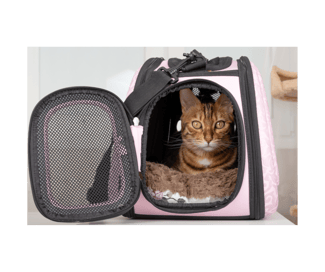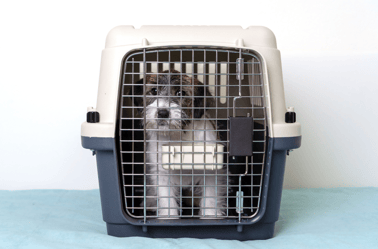The Best Airline-Approved Travel Carriers for Cats and Dogs
Updated on: December 15, 2025 | Author: Starwood Pet Travel
If you're planning a long-distance move for you and your pets involving air travel, you'll need to purchase an airline-approved travel carrier for their trip. It is very important to make sure that your pet carrier adheres to the standards set by the International Air Transport Association (IATA).
There are ton of options for carriers designed to keep cats and dogs safe and secure at home or during car rides. These convenient crates are lightweight and often collapsible for easy storage. However, it's important to note that these types of crates are usually not suitable for air travel.
When it comes to flying with your pets, it's crucial to choose an airline-approved travel carrier to keep your cat or dog safe and secure. With that in mind, let's explore the best kennels based on the different ways your pet can travel by plane.
In-Cabin or Carry-On

If you have a cat or a small dog, there is a possibility that they can accompany you in the cabin of the airplane, fitting comfortably under the seat in front of you. However, it's important to note that not all airlines allow this and certain foreign countries require pets to be transported as manifested cargo. You'll need to check with your airline ahead of time.
Once you've confirmed your pet can fly with you in-cabin, you'll need to double-check the airline's requirements for travel carriers. Most sizes are fairly standard, and soft-sided carriers are typically most commonly accepted.
Excess Baggage or Manifest Cargo
If your pet will be traveling as excess baggage (checked baggage) or manifest cargo, it is essential that they have a carrier that meets the specifications outlined by the International Air Transport Association (IATA). While these airline-approved kennels can be made from various materials such as fiberglass, solid wood, or plywood, most of them are heavy-duty rigid plastic and welded metal mesh.

The pet carrier you choose must be large enough for your pet to stand, sit, turn around, and lie down comfortably. To ensure the proper size carrier, it's important to measure your dog. If you have a snub-nosed breed like a Pug or Bulldog, they will need the next size larger carrier to ensure sufficient ventilation. Certain breeds, such as Pit Bulls, may have specific requirements for travel kennels depending on the airline. Very large breeds like Great Danes usually require custom-made wooden travel kennels larger than standard sizes. If needed, Starwood can provide custom wood kennels.
The travel carrier should also have food and water bowls attached to the inside of the door, with the ability to be filled from the outside.
Some of the best hard plastic pet carriers include:
Where can I find a carrier to ship my dog or cat?
You can purchase airline-approved carriers and IATA-compliant kennels from:
- Pet supply stores such as Petco or Petsmart
- Online stores such as Chewy, Amazon or Petmate
- From your professional pet shipper
It's important to keep in mind that not all kennels are created equal. While many stores offer a variety of hard-sided carrier options and advertise them as "airline-approved", not all of them meet the requirements set by IATA. So, it's crucial to pay attention to the details and not simply choose the first crate you come across.
To ensure your pet's comfort and safety during travel, it's recommended to get the crate as soon as you know they will be traveling. This way, they have plenty of time to become familiar and comfortable with their travel kennel.
Subscribe to the Blog
Enjoy our content? Get them sent to your inbox!
Subscribe Now!

